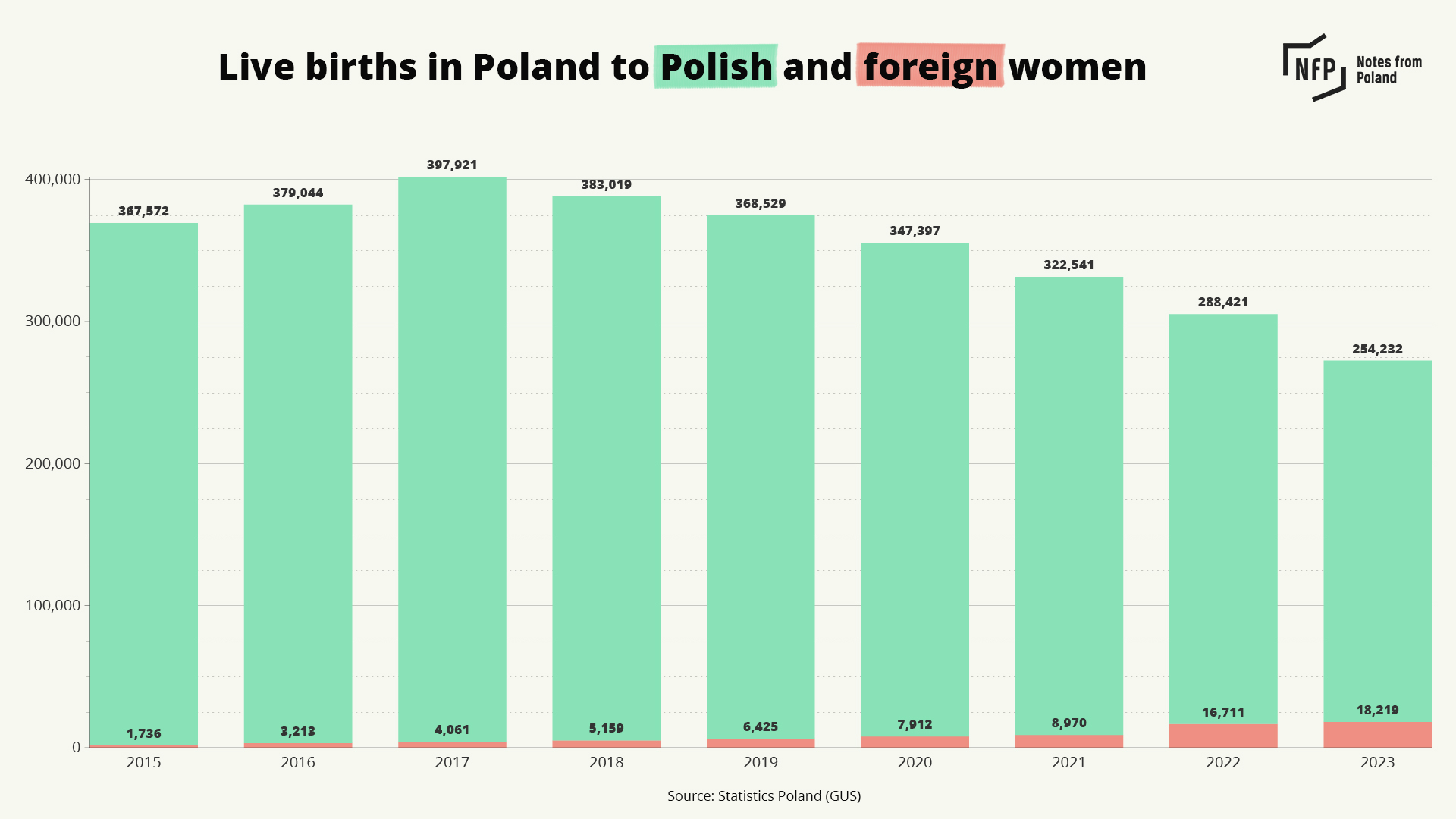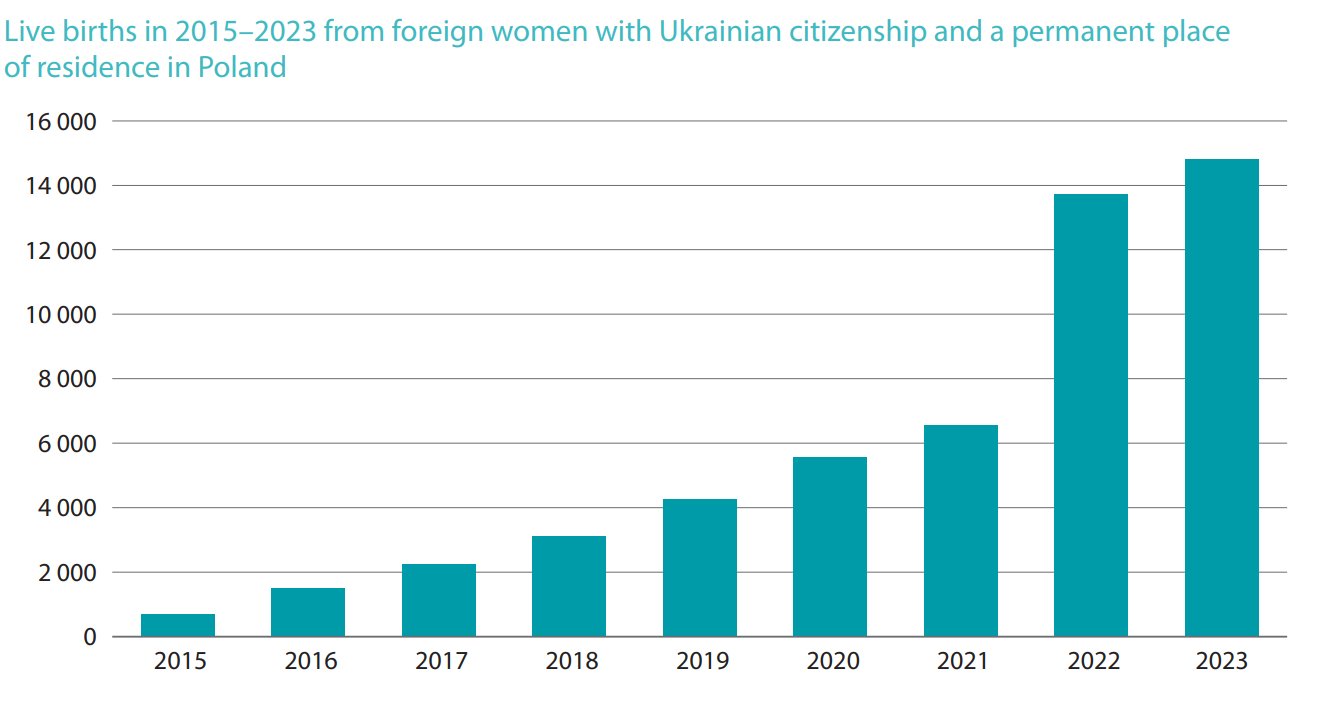Foreign women accounted for 6.7% of births in Poland last year, a share more than three times higher than in 2020. The vast majority of those foreign mothers, over 81%, were from Ukraine, new data from Statistics Poland (GUS), a state agency, show.
The growing number of foreign women giving birth in Poland, however, has now offset what the country’s statistical office describes as a “demographic crisis” amid a declining number of births.
According to GUS, there were 272,451 live births in 2023, the lowest number Poland has seen since the Second World War and down from 305,000 the previous year, which was also a record low.

GUS recorded the births of 18,219 children to women without Polish citizenship, accounting for 6.7% of all live births, up from 5.5% in 2022. In 2020, the figure stood at 2.2% and in 2015 at just 0.5%.
Almost 14,800 of those births were to Ukrainian mothers, with the next largest numbers from Belarus (1,004), Russia (261), Vietnam (200), India (166), Georgia (155) and Moldova (125).
The figures come following levels of immigration over the last decade that are unprecedented in Polish history and among the highest in the European Union over that period. As well as economic migrants, Poland received a large number of refugees from Ukraine in the wake of Russia’s invasion.

GUS’s latest report confirms, however, that Poland’s population has continued to decline. In 2023, it shrunk by 130,000, or 0.34%, to 37.6 million. According to Eurostat, the EU’s statistical agency, Poland recorded the largest population decline among all member states last year.
“The decreased number of births recorded in 2023 confirms that Poland has entered another demographic crisis,” wrote GUS.
The agency notes that Poland also experienced a temporary demographic crisis from 1997-2007 but adds that “the current one may be longer” given the trends in births, mortality, life expectancy, migration and marriage.
Last year, Poland’s state Social Insurance Institution (ZUS) calculated that, in order to maintain its current ratio of working-age population to retirees, Poland would need to attract almost two million immigrant workers over the next decade.

In 2023, Poland saw the second-lowest number of newly contracted marriages on record since the Second World War, with 146,000. A lower figure was seen only in the pandemic year of 2020, when it stood at 145,000.
The data show that the proportion of marriages that saw a Polish citizen marry a foreign one rose to 3.8% last year, up from 2.8% in 2020 and 1.7% in 2010. Polish men most often married Ukrainian and Belarusian women while Polish women most often married British, German, Italian and Ukrainian men.
The number of marriages contracted in Poland between two people of Ukrainian citizenship has also increased rapidly amid the war in Ukraine, tripling year-on-year in 2023 to reach just under 2,200.

Notes from Poland is run by a small editorial team and published by an independent, non-profit foundation that is funded through donations from our readers. We cannot do what we do without your support.
Main image credit: Mirek Pruchnicki/Flickr (under CC BY 2.0)

Alicja Ptak is deputy editor-in-chief of Notes from Poland and a multimedia journalist. She has written for Clean Energy Wire and The Times, and she hosts her own podcast, The Warsaw Wire, on Poland’s economy and energy sector. She previously worked for Reuters.



















